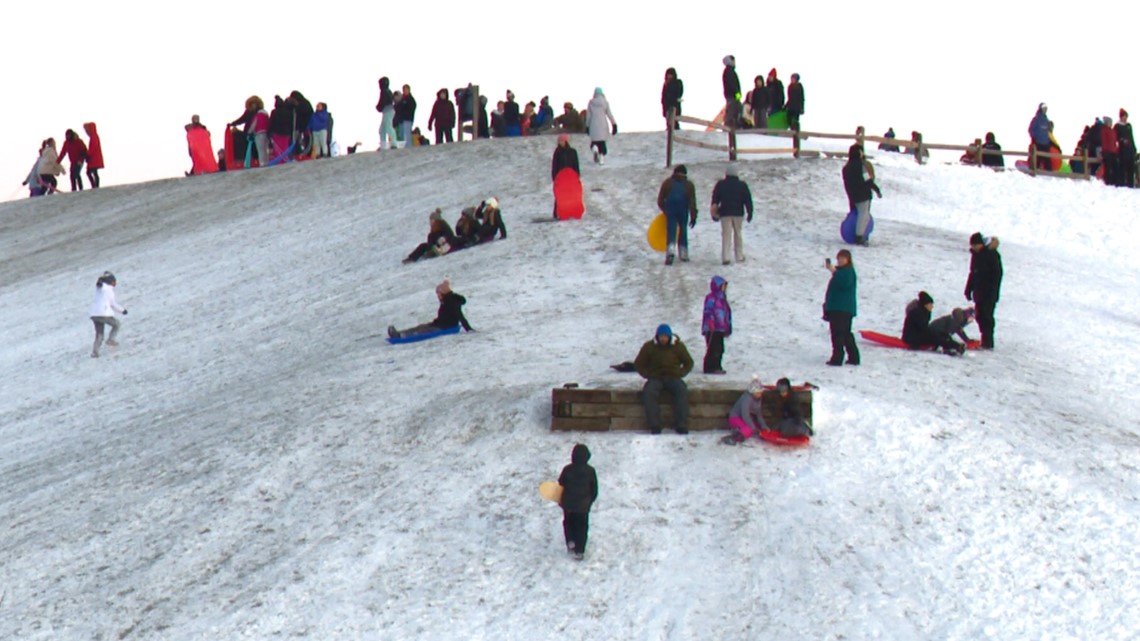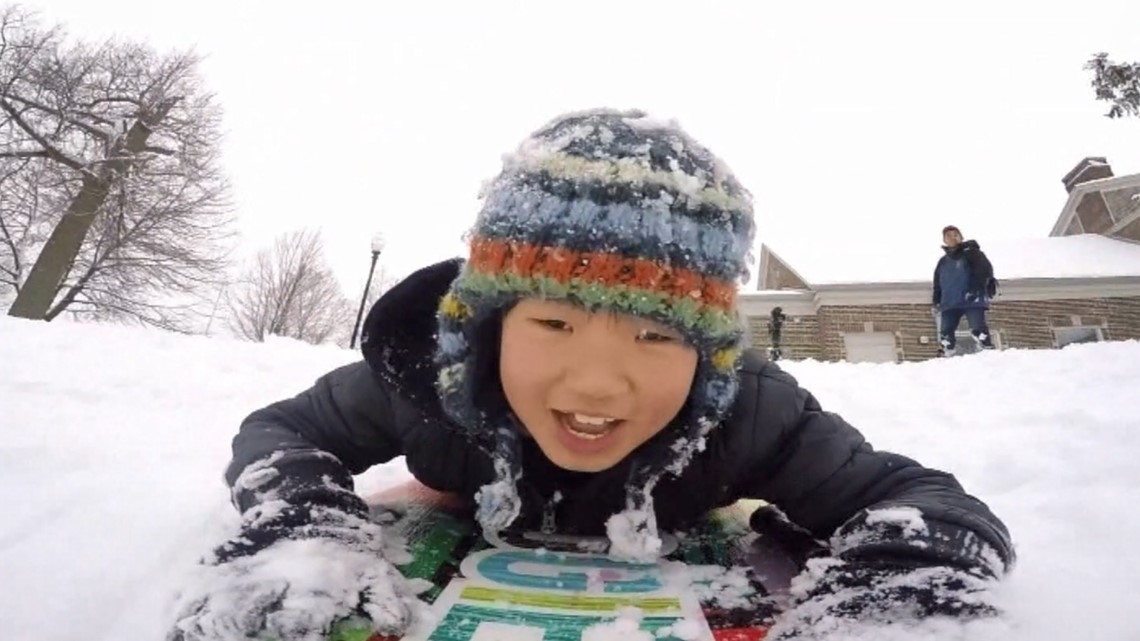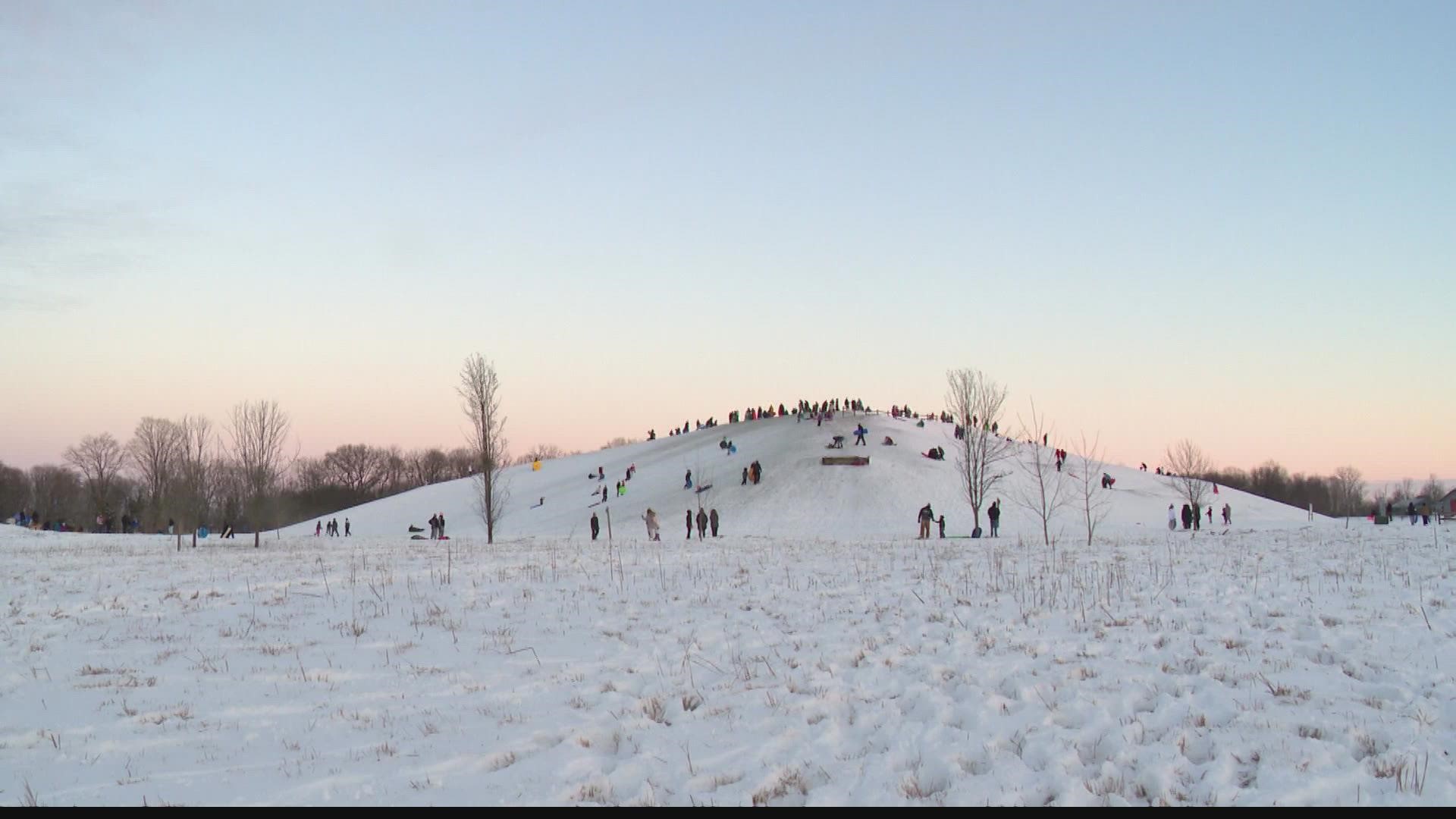FISHERS, Ind. — This week’s cold temperatures and snow landed plenty of kids in the emergency room at Riley Hospital for Children. Doctors there say, since Wednesday, they’ve seen plenty of broken bones and frost bite cases.
Snow days just aren’t what they used to be, with kids used to doing e-learning after two years of the coronavirus.
“We got to enjoy our snow days,” said mom Lindsey Robert.
“They did pretty good, though. Five hours or so in the morning and school was done,” Roberts said of how her 14-year-old son, Tony, spent the day.
By Friday afternoon, it was time for Tony to head outside to Flat Fork Park in Fishers.
“When we pulled up, there was like a million kids, all you saw were kids up on the hill. So, I was like, ‘Be careful,’” Roberts explained of her advice to her son as he got out of the car to go sledding.


“We want to take advantage of the snow day, 'cause there’s no school, so it was really fun,” said 10-year-old Adrina Kiley, who went sledding with her friend Friday afternoon.
“As many times as they can go up and down the hill until they’re tired and then we’re done,” said Adrina’s dad, Brett, of how long he planned to stay there, sitting inside his truck, waiting for Adrina and her friend to be ready to go home.
“Me and my best friend hit into a huge rock and we both split up,” Adrina explained of one of her trips down the hill.
They weren’t hurt, but doctors at Riley Hospital for Children have seen plenty of kids in the past few days who have been injured while outside playing in the snow.
“No one goes to the hill thinking they’re going to be the next person in the trauma bay,” said Dr. Matt Landman, the trauma director at Riley and a pediatric trauma surgeon.
Landman explained that wearing a helmet is a good safety measure when sledding, along with avoiding going down a hill headfirst.


“Take a few minutes to understand your surroundings. What’s there? What could potentially hurt you can go a long way to preventing serious injury,” Landman said.
Knowing the signs of frostbite and hypothermia are also important, Landman said.
“Some pain and tingling in your fingers, your toes, maybe on your face. Maybe we’re starting to see color changes to those areas and really that’s the first step to frostbite,” he said.
If you see those things, your next step should be to get your child out of the cold and warmed up.
Hypothermia starts with shivering, Landman said, a sign that a person’s body is responding to a temperature change. From there, it can quickly get worse. If you see any of the following signs, your child needs medical attention.
“Things like confusion, drowsiness, slurred speech,” said Landman, adding that it’s important for parents to check in with their kids out in the snow and cold and have a plan if something doesn’t go well.
"It’s one of the greatest parts of being in the Midwest, enjoying snow like this, but it really is an opportunity to think through how to be safe,” said Landman.
Parents like Brett Kiley and Lindsey Roberts said they have thought ahead, so the day can end with a trip home and not one to the emergency room.
“They’re having a great time,” said Kiley.

